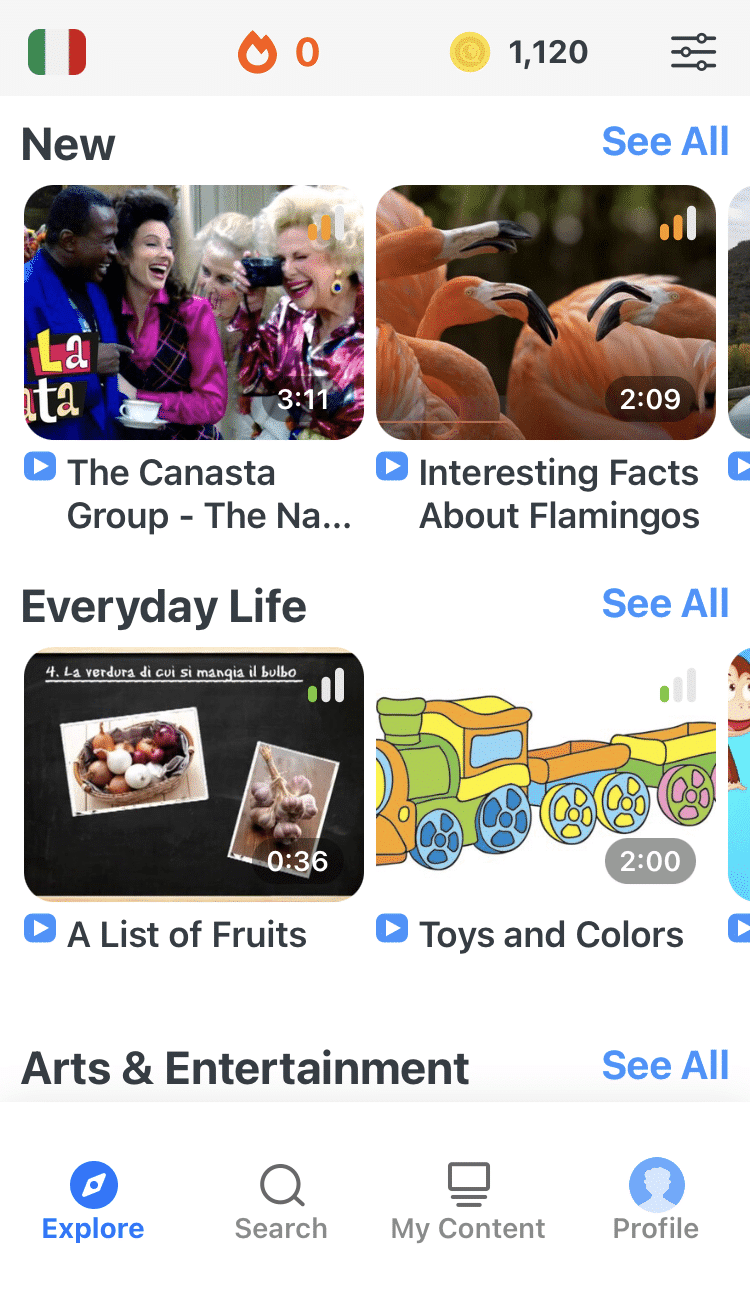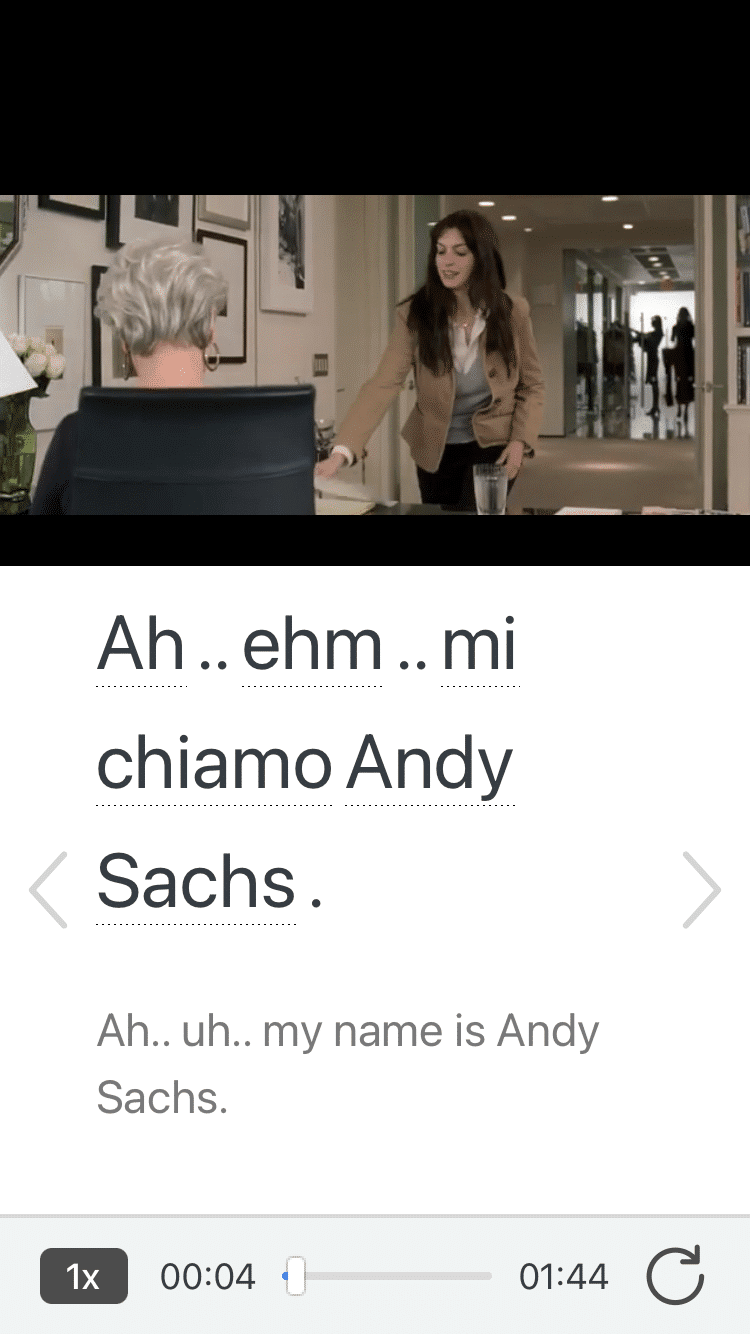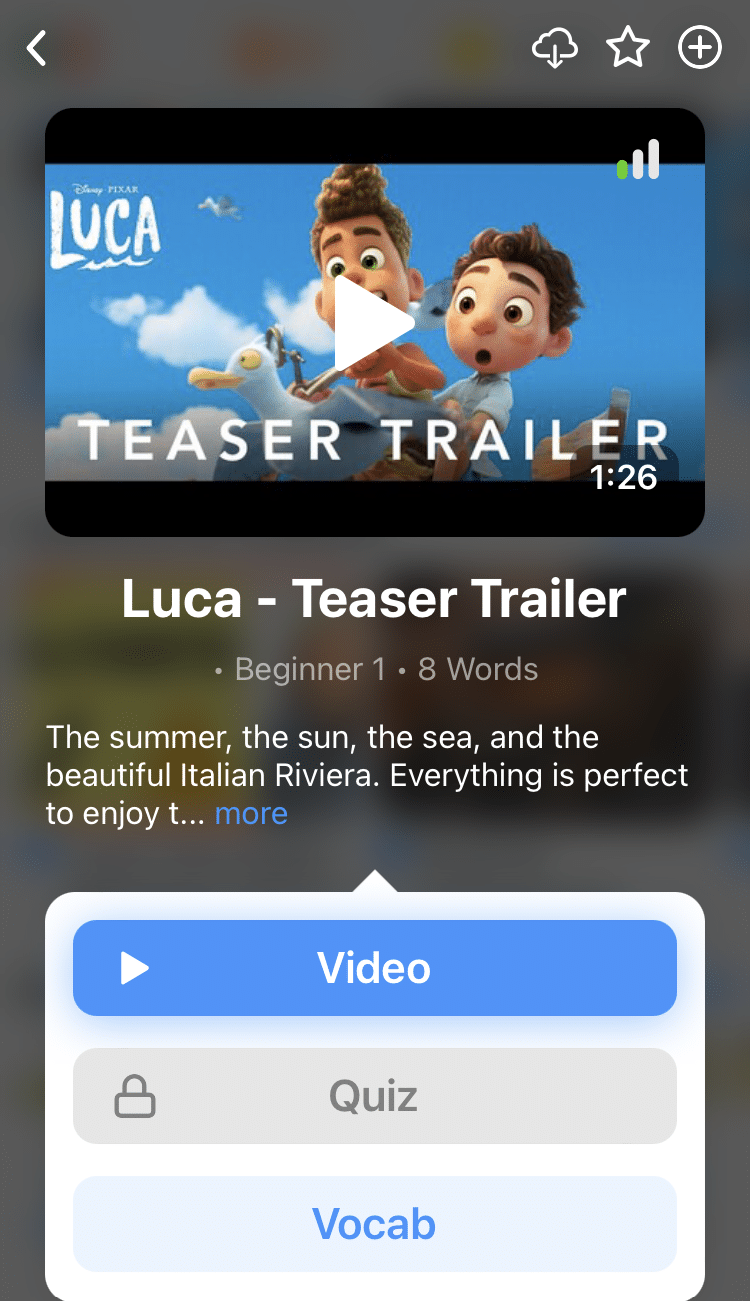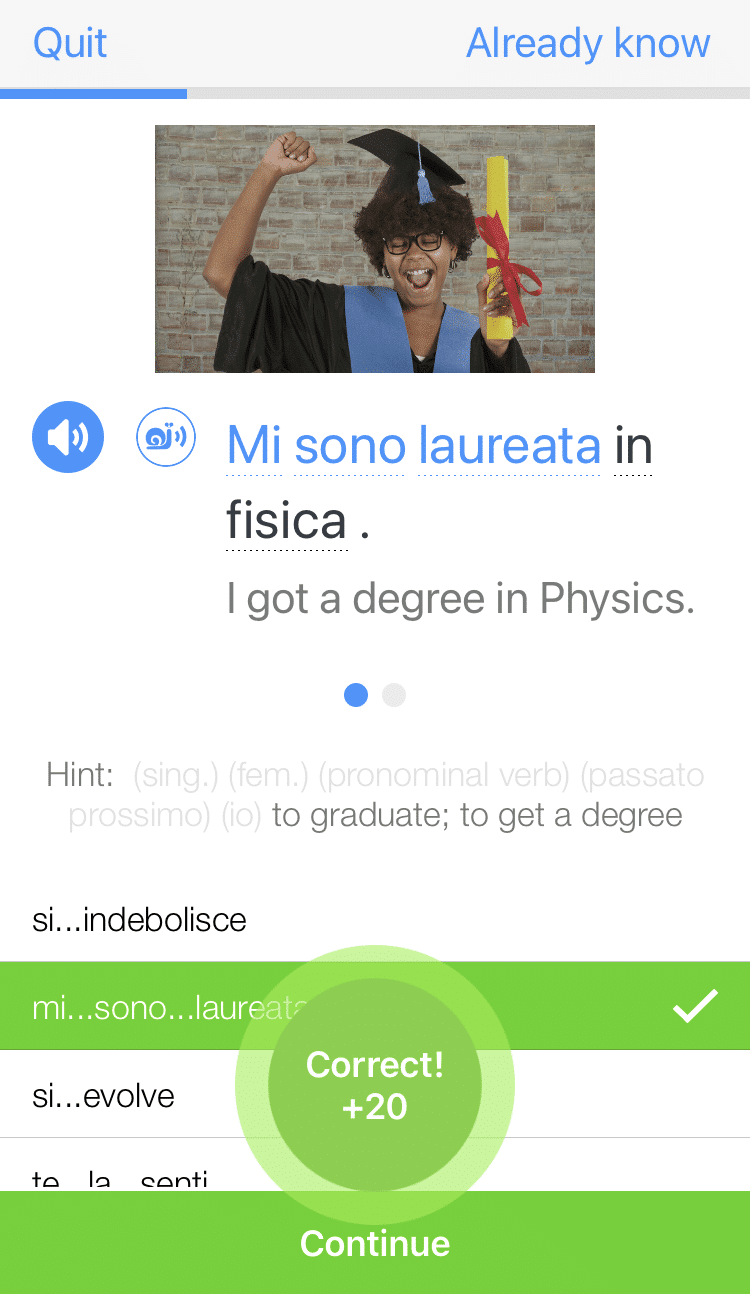
The Importance of “Stare” in Italian and Its Many Uses
We do a lot more “staying” than you’d think.
We stay home. We stay still. We stay online to read really cool language learning blogs (wink, nudge).
The point is, on the surface, knowing how to use the verb “stay” might not seem particularly useful compared to more common ones like “to be” or “to go.”
But believe it or not, it’s incredibly useful in every aspect of a language. From everyday conversation to reading a book, you’ll run into this verb and its conjugations quite a bit in Italian.
Going even beyond the basics, Italian uses stare (to stay) in some pretty unique ways—ways that you may not even think of when you’re not a native speaker.
Figuring out this one little verb can expand your ability to express yourself and talk to others in Italian.
This post will introduce you to the vital basics of how to use this verb and even how to conjugate a few tenses.
So, settle in and stay tuned. (See? It’s everywhere.)
Download: This blog post is available as a convenient and portable PDF that you can take anywhere. Click here to get a copy. (Download)
Sit, Stay, Exist! Using “Stare” in Italian to Express States of Being
A Bit About the Verb Stare
The direct translation of stare is “to stay,” as in to physically remain someplace. That definition is similar to the the English version, but it comes with another meaning on top of that. Stare can also connote status and feeling (we’ll get to this in more detail later on).
You might recognize it from one of the most common phrases in the Italian language: “Come stai?” or the more formal “Come sta?” Both of these phrases use stare to ask the question “How are you?” but the direct translation of the phrase is “How are you staying?” This is our first example of how the verb can indicate states of being instead of just literally staying in place.
This also shows a hint of how the conjugation works. Stai is used because it’s a conjugation of the informal you, tu. Sta is used as a conjugation of the formal you, voi. Conjugation of certain tenses like this’ll also be covered in its own section later in this post, so keep on reading to find out more.
Something else that’s important to remember is that stare is an irregular verb. This means that it follows a non-standard conjugation pattern, and you can’t just plug in verb conjugations that you see in regular verbs like leggere (to read). For other examples, you can check out other common irregular verbs such as essere (to be) and fare (to do).
This also works in reverse, meaning that you shouldn’t apply the conjugation of stare to other verbs expecting that they’ll be accurate.
Now that you know some of the facts, let’s work on actually using the verb.
Using Stare in Italian
While stare looks exactly like the English word “stare” (as in, “to look at something intently”), they don’t sound alike. The verb is pronounced “stah-ray,” with its conjugated forms containing that same short a sound. There are no accent marks needed in its infinitive form to get the pronunciation across, so just focus on polishing the simple, two-syllable setup that this verb has.
As there are multiple applications for using the verb and lots of situations where it can come up, it helps to see how native speakers use it. For example, you could read Italian literature, or you could also try using an immersion program like FluentU to search for this verb and find videos where it appears in context.
FluentU takes authentic videos—like music videos, movie trailers, news and inspiring talks—and turns them into personalized language learning lessons.
You can try FluentU for free for 2 weeks. Check out the website or download the iOS app or Android app.
P.S. Click here to take advantage of our current sale! (Expires at the end of this month.)
It can be a little difficult to get a handle on words with multiple meanings when you’re learning another language. Just remember that context is key. Paying attention to when and how this verb is used by people who know the language well can make a big difference. Try to pick it out in common phrases like “How are you?” and notice the way it fits into a sentence.
There are plenty of other important ways in which stare finds its way into the average Italian conversation. It can be used to indicate a person’s appearance, as a necessary verb in the present progressive (presente progressivo) tense and for ordering someone to be or act a certain way.
As we said in the section before, stare is used to convey someone’s state of being almost as much, if not more than it’s used to show someone remaining in place. You can use stare to show how you’re feeling both emotionally and physically, as well as speak about how others are.
It’s time to get into this particular usage in a little more detail.
Use Stare to Talk About States of Being
Remember “Come stai?” Answering this question uses stare as well.
Here are some examples of phrases that you might use to answer that question, shown in dialogue format.
Example Dialogue 1:
“Ciao! Come stai?” (“Hello! How are you!”)
“Sto bene, grazie. E tu?” (“I’m fine, thanks. And you?”)
“Tutto bene!” (“Everything’s fine!”)
Example Dialogue 2:
“Ah, Marco, non ti senti bene oggi. Come stai?” (“Ah, Marco, you don’t look so good today. How are you?”)
“Sto male. Ho la tosse.” (“I’m sick. I have a cough.”)
“La tosse? Che peccato!” (“A cough? That’s too bad!”)
Did you notice the two responses that contained the word stare? These dialogues both used the conjugation sto, which means “I stay” when literally translated. In these contexts, however, where a person is saying how they’re doing, it’s used to express feelings or health.
It helps to think of stare as a way to declare your “status.” One of the Italian words for status, stato, even doubles as one of the conjugations for the verb (specifically, in the past perfect tense).
Use Stare to Indicate Location
Now, of course, it’s important to remember that stare can be used in a literal sense, to tell where a person is physically staying. This is pretty straightforward: Just use the verb to indicate where a person might be staying or living at a particular moment.
Here are some sample sentences for that context:
Tu stai a Milano stasera? (You’re in Milan this evening?)
Noi stiamo a casa di mia madre. (We’re staying at my mother’s house.)
Use Stare to…
There are a number of other ways to use stare.
You can use stare as a command. In use, you’re instructing or telling someone to be a certain way—to take on a specific state, as it were.
Here are some examples of how that might look in practice:
Stai fermo! (Stay still!)
Stai attento, per piacere. (Be careful, please.)
Now, let’s say you want to instead use stare in the present progressive tense. This tense is used rather specifically, to indicate something that’s happening in the moment. This doesn’t get a lot of use in Italian, but it’s one of the major uses of stare.
In this tense, you use stare in conjunction with whatever the person is doing to show that it’s being done at that very moment. When conjugating, stare is simply rendered in present tense with the additional verb conjugated to the present progressive tense.
In short, to use this correctly, all you have to know about stare is how to conjugate it in present tense.
To see this in practice, let’s look at some examples:
Io sto andando al cinema. (I’m going to the movies.)
Noi stiamo mangiando. (We’re eating.)
Remember that this present tense specifically means you (or the person being referred to) are in the process doing this action at the moment it’s being said.
Finally, you can use stare to express to how things appear. This is pretty straightforward: in context, stare says how something looks to a speaker. Here are some examples of this in practice:
Quella giacca ti sta proprio bene. (That jacket looks really good on you.)
Come sto? (How do I look?)
Now that we’ve covered the variety of ways you can use this verb, let’s look at some finer details.
Confusing Couples
Stare vs. Avere
Stare can be used to show a number of different things, mostly involving a person’s situation or state of being. A notable difference here is when talking about certain feelings or states, which requires the use of the verb avere (to have), instead.
For example, when you’re hungry or thirsty, you say:
Ho fame. (I’m hungry. Literally: “I have hunger”)
Ho sete. (I’m thirsty. Literally, “I have thirst”)
This might seem familiar to you if you speak other languages like German or Spanish, which use similar phrases like Ich habe Hunger or Tengo sed, all of which also have the same literal translations as the examples above.
It helps to pay attention again to context and notice which terms are used when. While avere is only used for hunger and thirst to indicate a state of being, you might run into a little more confusion with essere (to be).
Stare vs. Essere
The verbs you’ll run into the most often when talking about states of being are avere, stare and essere (to be). Here are some quick sample sentences to get an idea of where you might use stare.
Io sto bene. (I’m doing well.)
Tu stai male. (You’re sick.)
To help figure the difference out, let’s take a look at their literal translations. Essere is “to be,” while stare is “to stay.” This means that essere is about being while stare is about status and state of being.
This might feel like splitting hairs. The good news is that for many things, these verbs are interchangeable. For example, when indicating a location, either essere or stare will do the trick.
In terms of status, stare is more often used for broader states of being rather than specific feelings (sto bene, sto male, etc). This goes back to what we said before about status versus being. When it comes to your more detailed emotions, essere is usually the way to go.
For example, you’d use stare to say that you’re in a state of being ill (Sto male — I am sick) and essere to explain how that makes you feel (Sono triste — I am sad).
Conjugating the Italian Verb Stare
Italian has plenty of different tenses and verb conjugations. This post isn’t going to include all of them for stare, but it’ll cover a useful handful of forms that the verb can take. These pop up quite a bit in a typical Italian conversation, so be on the lookout.
Present Indicative Tense (Indicativo)
io sto
tu stai
lei/lui/Lei sta
voi state
noi stiamo
loro stanno
Present Perfect Tense (Passato Prossimo)
io sono stato/stata
tu sei stato/stata
lei/lui/Lei è stato/stata
noi siamo stati/state
voi siete stati/state
loro sono stati/state
Note that the conjugation of stare here includes the present tense conjugation of essere (to be).
Also, take careful note of the difference in usage between singular and plural pronouns. The use of stato versus stata and stati versus state depends on subject gender.
Simple Future Tense (Futuro Semplice)
io starò
tu starai
lei/lui/Lei starà
noi staremo
voi starete
loro staranno
For a full list of conjugations of stare, visit verbi-italiani.info.
Now that you’re armed with the basics, it’s time for you to go out and use, read and say stare and its particularly useful conjugations.
You can say a lot with this nifty little verb and this post only scratches the surface, so dig deep into your Italian media and conversations to see firsthand how it works in practice.
Download: This blog post is available as a convenient and portable PDF that you can take anywhere. Click here to get a copy. (Download)
And One More Thing...
If you're as busy as most of us, you don't always have time for lengthy language lessons. The solution? FluentU!
Learn Italian with funny commericals, documentary excerpts and web series, as you can see here:

FluentU helps you get comfortable with everyday Italian by combining all the benefits of complete immersion and native-level conversations with interactive subtitles. Tap on any word to instantly see an image, in-context definition, example sentences and other videos in which the word is used.

Access a complete interactive transcript of every video under the Dialogue tab, and review words and phrases with convenient audio clips under Vocab.

Once you've watched a video, you can use FluentU's quizzes to actively practice all the vocabulary in that video. Swipe left or right to see more examples of the word you’re on.

FluentU will even keep track of all the Italian words you’re learning, and give you extra practice with difficult words. Plus, it'll tell you exactly when it's time for review. Now that's a 100% personalized experience!
The best part? You can try FluentU for free with a trial.
Start using the FluentU website on your computer or tablet or, better yet, download the FluentU app from the iTunes or Google Play store. Click here to take advantage of our current sale! (Expires at the end of this month.)




